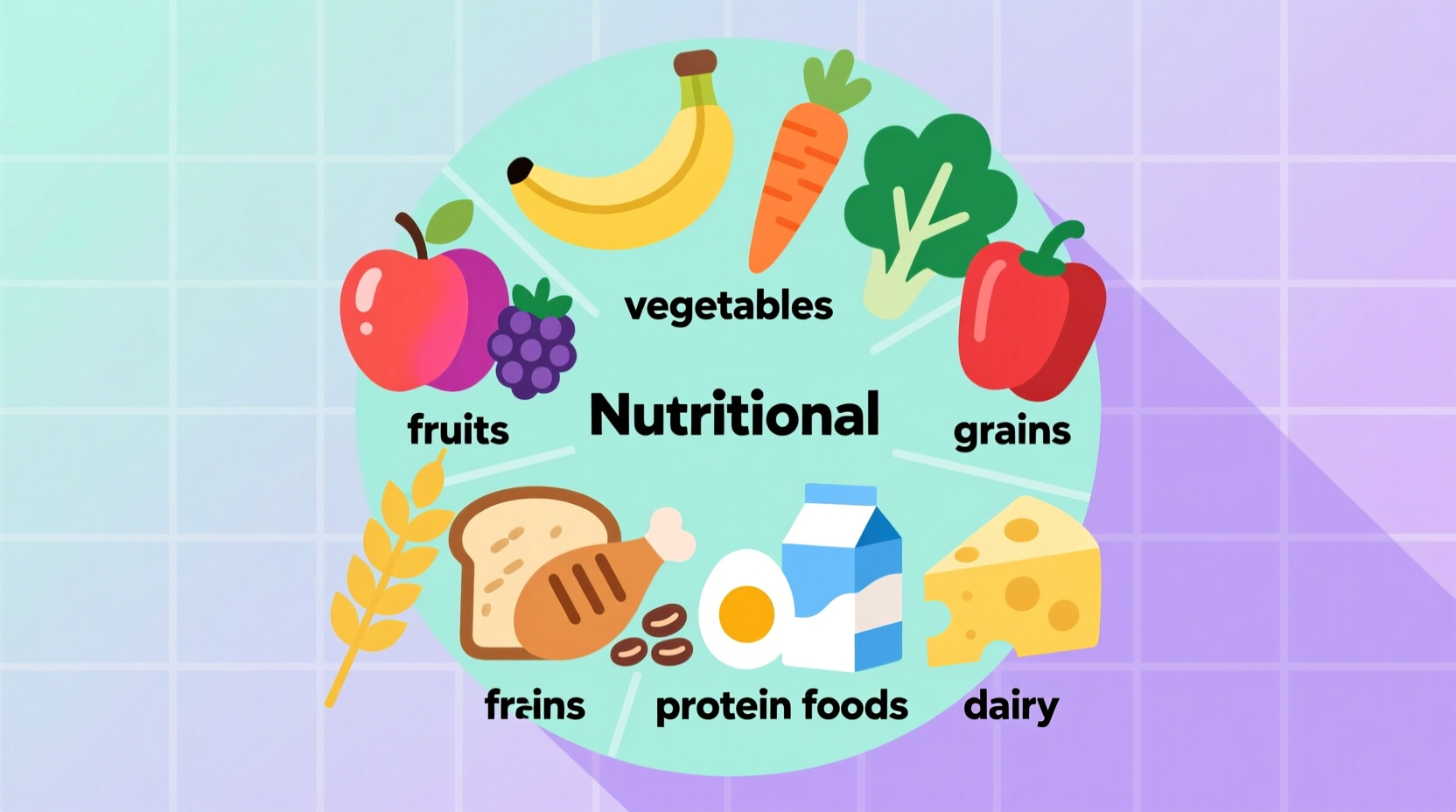Understanding food groups transforms how you approach meal planning and nutrition. This knowledge empowers you to build balanced plates, meet daily nutrient requirements, and make informed choices at the grocery store—without complicated calorie counting or restrictive dieting.
The Science Behind Food Classification
Nutrition science categorizes foods based on shared nutritional profiles and health benefits. The current food group system evolved from early 20th century nutrition research when scientists began identifying essential vitamins and minerals. By the 1940s, the USDA established the first "Basic Seven" food groups, which later evolved into the Four Food Groups in the 1950s, then the Food Guide Pyramid in 1992, and finally today's MyPlate model.
| Year | Classification System | Key Changes |
|---|---|---|
| 1943 | Basic Seven Groups | Added butter/fats and "protective foods" for vitamin focus |
| 1956 | Four Food Groups | Simplified to milk, meat, vegetables/fruits, breads/cereals |
| 1992 | Food Guide Pyramid | Introduced serving ranges and visual hierarchy of food importance |
| 2011 | MyPlate | Replaced pyramid with place setting showing portion balance |
Breaking Down the Five Food Groups
Fruits: Nature's Sweet Nutrition
Fruits provide essential vitamins, minerals, fiber, and antioxidants. The USDA defines fruits as "any fruit or 100% fruit juice. Fruits may be fresh, canned, frozen, or dried, and may be whole, cut-up, or pureed." One serving equals one cup of raw fruit or 100% fruit juice, or ½ cup of dried fruit.
Vegetables: The Colorful Foundation
Vegetables offer diverse nutrients depending on their color and type. They're categorized into five subgroups: dark green, red and orange, beans and peas (also counted as protein), starchy, and other vegetables. The Dietary Guidelines for Americans 2020-2025 recommend making half your plate vegetables at meals, with particular emphasis on dark leafy greens and colorful varieties.
Grains: Energy Providers
Grains contain carbohydrates, fiber, and B vitamins. The key distinction is between whole grains (containing all parts of the grain kernel) and refined grains (missing one or more parts). Nutrition experts recommend making at least half your grains whole, such as brown rice, quinoa, oats, and whole wheat bread. One serving equals 1 slice of bread, 1 cup of ready-to-eat cereal, or ½ cup of cooked rice, pasta, or cereal.
Protein Foods: Building Blocks
This group includes not just meat but diverse options like seafood, poultry, eggs, nuts, seeds, and soy products. The American Heart Association notes that "plant-based proteins generally contain less saturated fat than animal proteins," making them heart-healthy choices. Beans and peas uniquely count in both the protein and vegetable groups due to their nutrient profile.
Dairy: Calcium Powerhouse
Dairy provides calcium, potassium, vitamin D, and protein. The USDA includes milk, yogurt, cheese, and fortified soy alternatives in this group. For those with lactose intolerance, fortified plant-based alternatives count if they provide equivalent nutrients. One serving equals 1 cup of milk or yogurt, 1½ ounces of natural cheese, or 2 ounces of processed cheese.

Practical Application in Daily Eating
Translating food groups into daily practice requires understanding portion sizes and balance. The Harvard T.H. Chan School of Public Health recommends a simple visual guide: fill half your plate with vegetables and fruits, one-quarter with whole grains, and one-quarter with protein sources, plus a side of dairy or fortified alternative.
For meal planning, registered dietitians suggest using the "plate method" rather than counting servings:
- Breakfast: Whole grain toast (grains) + scrambled eggs (protein) + berries (fruit) + milk (dairy)
- Lunch: Large salad with mixed greens (vegetables) + grilled chicken (protein) + quinoa (grains) + vinaigrette dressing
- Dinner: Baked salmon (protein) + roasted sweet potatoes (vegetables) + steamed broccoli (vegetables) + brown rice (grains)
Global Variations in Food Group Systems
While the five-group system is standard in the United States, other countries have adapted classifications to reflect cultural eating patterns. Canada's Food Guide emphasizes "food skills" rather than strict groups, while Australia's guide categorizes foods into five similar groups but with different serving recommendations. Japan's "Food Balance Steer" graphic uniquely includes physical activity as part of the nutritional guidance.
It's important to recognize that food group knowledge has specific boundaries—it provides foundational guidance but doesn't replace personalized nutrition advice for medical conditions. As the World Health Organization states: "Dietary guidelines should be adapted to local contexts, food availability, and cultural preferences while meeting nutritional requirements."
Common Misconceptions Clarified
Several myths persist about food groups that can lead to unbalanced eating patterns:
- Myth: All carbs are bad
Fact: Whole grains provide essential nutrients and fiber that support digestive health - Myth: Protein must come primarily from meat
Fact: Legumes, nuts, seeds, and soy products provide complete protein options - Myth: Fruit sugar is as harmful as added sugar
Fact: Whole fruits contain fiber and nutrients that mitigate sugar impact
Putting Food Groups to Work for You
Start implementing food group knowledge with these practical steps:
- Conduct a "pantry audit" categorizing your current foods by group
- Create a shopping list template organized by food groups
- Use the "add, don't subtract" approach—add vegetables to meals rather than restricting foods
- Experiment with one new food from each group weekly
Nutrition researchers at the National Institutes of Health have found that individuals who consciously incorporate all five food groups show 27% higher adherence to healthy eating patterns compared to those focusing only on restriction. The key isn't perfection but consistent progress toward balanced variety.











 浙公网安备
33010002000092号
浙公网安备
33010002000092号 浙B2-20120091-4
浙B2-20120091-4